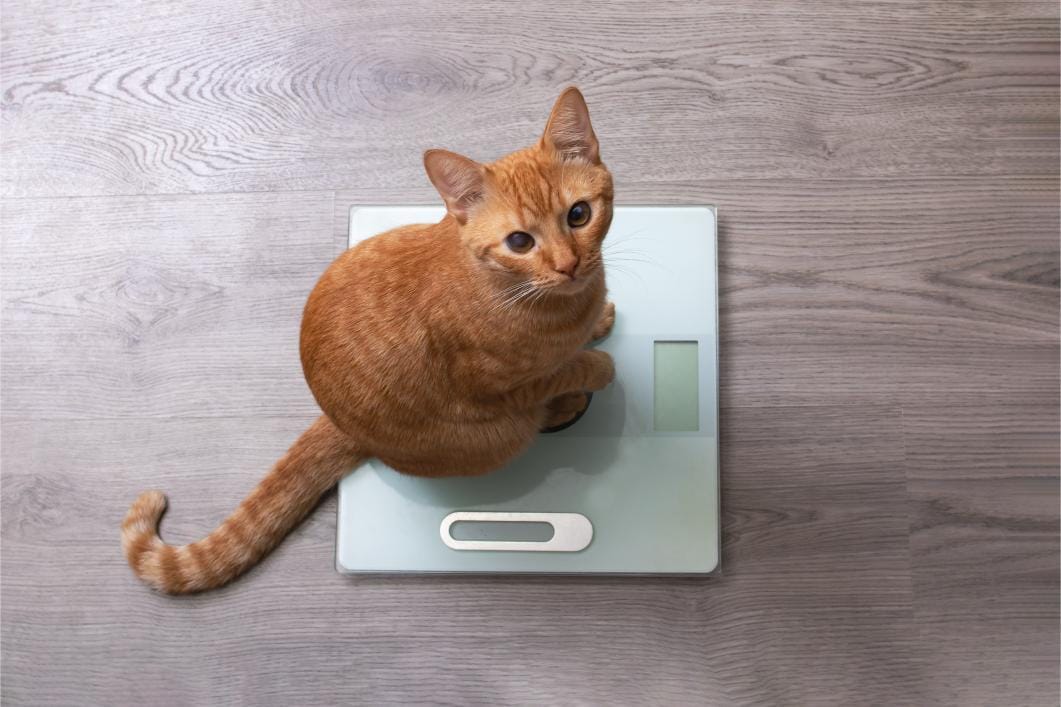Obesity In Cats

Obesity in cats is a major health problem. Today, it’s estimated that over 50 percent of cats are overweight or obese. Plenty of cats struggle with feline obesity, however. Being overweight puts your beloved feline friend at a higher risk of developing diabetes, heart disease, and arthritis.
The team at the Sacramento Cat Hospital would like to share 7 top tips for cat weight management.
Tips to Avoid Feline Obesity
1. Understand What Constitutes Feline Obesity
A cat is considered overweight if she weighs 10-20% more than her ideal body weight, and obese if she exceeds that by 20% or more. If you’re not sure where your kitty falls on the scale, it might be time for a vet visit. Regular vet check-ups can help you monitor your cat’s weight.
2. Choose the Right Cat Diet
Diet plays a crucial role in cat weight management. Talk to your veterinarian to determine the best diet plan for your cat. Typically, veterinarians will recommend a high-protein, low-carbohydrate diet for weight loss.
But there are also specially-formulated weight management cat foods that provide essential nutrients while reducing calorie intake. Your veterinarian can help you choose the one that’ll work best for your cat, based on her breed, size, and health history.
Above all, avoid feeding your cat table scraps or high-calorie treats—these can contribute to weight gain.
3. Measure Food Portions
Portion control is one of the simplest ways to prevent overeating. Use a measuring cup to make sure you’re providing the correct amount of food based on your cat’s dietary needs and activity level. If your cat loves to beg for more food, split the daily food allowance into smaller, more frequent meals. This can help keep your kitty satisfied throughout the day.
4. Encourage Your Cat to Exercise
Exercise is essential for burning calories and maintaining a healthy weight. So, play with your cat! The more often, the better. Use toys like feather wands, laser pointers, or toy mice to get her moving. Your cat won’t just enjoy the physical benefits of exercise. She’ll also reap the mental rewards of engaging in play.
5. Create a Movement-Friendly Environment
Consider adding climbing trees, scratching posts, and puzzle feeders to your home. These items create an indoor jungle gym of sorts for your cat. The result? More motivation for your kitty to move around, leap, and explore.
6. Monitor Progress
Keep track of your cat’s weight and body condition regularly. Weigh your cat at home using a pet scale, if you can. Monitoring your cat’s progress between visits helps you and your vet understand whether the diet and exercise plan needs adjustment, or whether it’s good as-is.
7. Avoid Free Feeding
Free feeding, or leaving food out all day, can easily lead to your kitty overeating. Instead of leaving the food bowl out all the time, stick to scheduled feeding times. This helps you control your cat’s calorie intake. If you have multiple cats, consider feeding them separately to make sure each cat gets the right amount of food.
How We Diagnose and Treat Obesity In Cats
Are you worried about your cat’s weight? Bring him to visit the caring team at the Sacramento Cat Hospital for a checkup. We’ll help identify any potential, underlying reasons for your cat’s increased weight—and help your kitty get back to a healthy number. Call us at 916-488-4161 to schedule an appointment!
